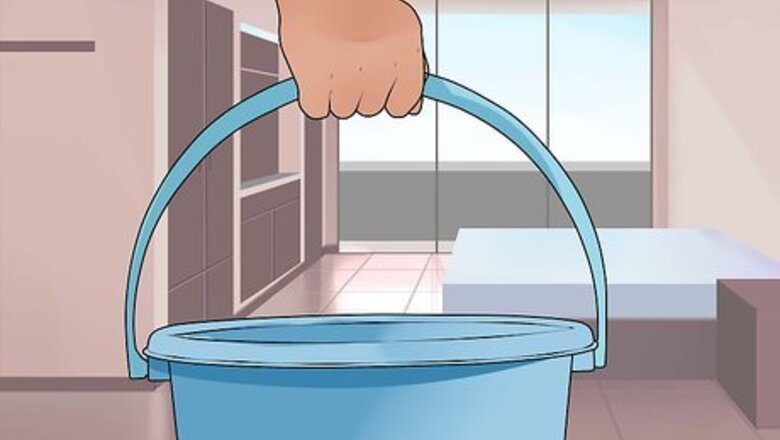
views
Vomiting in the Bucket

Get your bucket. Your bucket doesn't need to be anything special, just a place for you to vomit into. It should be small enough that you can hold it in your hands and hold it up to your face. If you are sick, or feeling nauseous, make sure you are prepared. Keep a bucket near where you are resting. At the very least, make sure it is easily accessible. If you have kids who might vomit, putting the bucket near the bed is a good bit of preparation in case they can't make it to the bathroom. Make sure your children knows what the bucket is for, so they are prepared if they need it.

Hold the bucket up to your face. If possible, you want the bucket at a level that will allow you to keep your head facing forward. While most people will want to tilt their head downward, this makes it more likely that you'll get vomit into your nasal passages. That's an uncomfortable complement to already getting sick. This is a great advantage to using a bucket instead of a toilet.
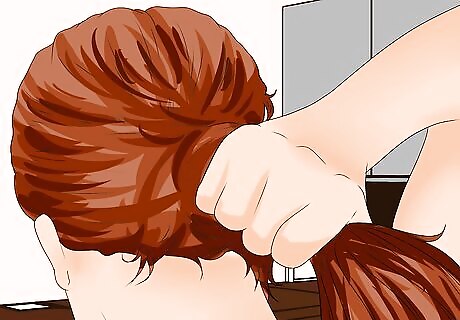
Hold back your hair. Make sure nothing is in your way before you vomit. The point of the bucket is to keep your vomit from going everywhere. Letting your hair get in the way will only create a bigger mess. If you have a friend or family member nearby, this can be something helpful for them to do. That way, you can use both hands to hold the bucket.
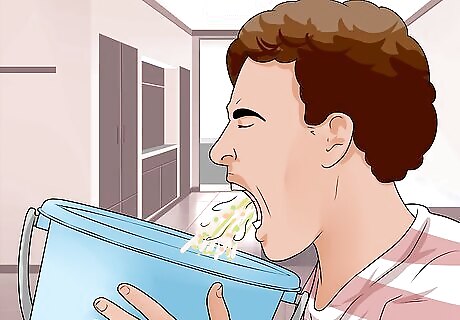
Vomit. Once you are in position, it can be best to let it all out. Vomiting doesn't feel good, but it can be a necessary way for your body to tell you something is wrong. Keep your head forward, and breathe deeply after finishing. Don't pull your head away from the bucket until you feel confident you have finished.
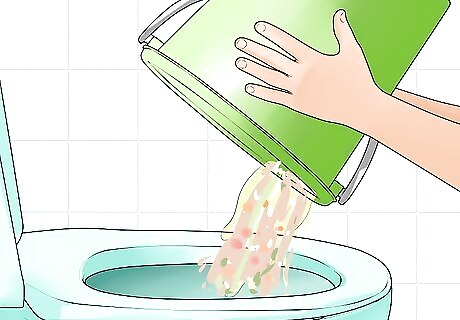
Clean out your bucket. Once you have finished vomiting, you'll need to clean out the bucket. Vomit, like other bodily fluids, can contain germs that lead to infection. Dump the vomit into a toilet and flush away. Use soap and water to rinse out whatever is left in the bucket. Use paper towels to wipe up anything else, and throw them away when you are finished. You can also use a 1:10 bleach solution (1 cup of bleach mixed with 9 cups of water) to disinfect further. If you do this, make sure to keep the mixture on the bucket for 10 minutes, and keep the room well ventilated. Do not mix with any other cleaning agents. It may be easier to line the bucket with a trash bag before vomiting. A used plastic grocery bag works just fine. Simply line the bucket with the bag, and after vomiting, simply toss the bag in the trash. Great for quick cleanups, and less odor accumulation, since you may replace the bag anytime. Make sure the bag has no holes in it. If you are still feeling sick, and not able to fully clean out the bucket, get away from it. Vomit has a pretty strong smell, which can trigger you into vomiting again.
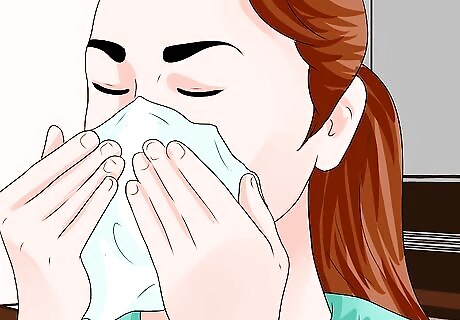
Clean yourself off. Rinse out your mouth with water until the taste is gone, and wash off your hands or any other part of your body. If you need it, a shower can feel refreshing while also getting you clean.
Putting Off Your Vomiting
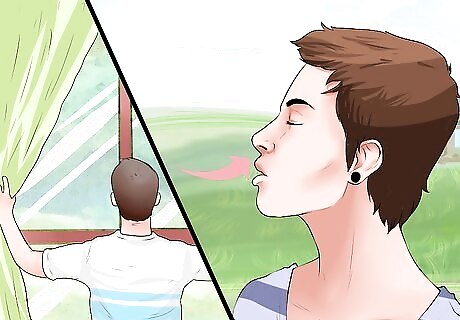
Get some fresh air. Tight spaces, or other stuffy situations, can increase nausea. Therefore, if possible, get out of the room for a few minutes, or at least open a window, then take several deep breaths of fresh air.
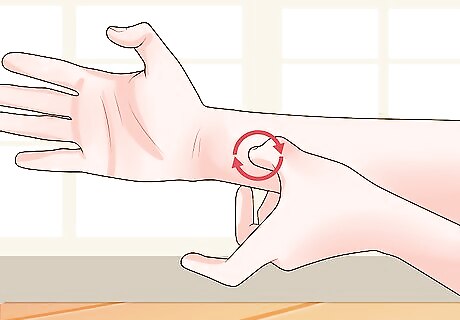
Use acupressure. Similar to acupuncture, acupressure is based on traditional Chinese practices and uses the body's natural pressure points. Applying occasional pressure to the P-6 pressure point on your wrist, can help lessen nausea and vomiting. With the palm of one hand facing up, place the first three fingers of your other hand over the wrist while feeling for the two large tendons under the thumb. The point you seek is about three finger lengths below your wrist. Apply pressure to the point using a circular motion while making sure you are pushing down on the point. This should not cause any pain or discomfort and you can continue to apply pressure for two or three minutes. Repeat on your other wrist. Locate the pressure point on your other wrist, then apply pressure in a circular motion for a couple of minutes.

Try relaxation techniques. Divert your attention from your discomfort by thinking about something calming. This method is most effective if you have practiced the technique before the need arises to relieve your nausea. There techniques which might help: Autogenic relaxation. This involves finding something to take your mind off the nausea (or whatever else you are feeling). Repeat a word or phrase to yourself, not related to your nausea. Try to think of something peaceful or relaxing. As you repeat this idea, make your deepen your breathing and relax your muscles. Visualization. Picture a peaceful or calming setting in your mind. Think about how your various senses would experience this place, things you might feel, smell, or hear, as well as what you would see. It can help to close your eyes and sit while you do this. Deep breathing. Find a quiet place to sit. Take a normal breath, then a deep breath. Breathe in slowly through your nose, and let the air fill your lungs and abdomen. Exhale slowly, through your mouth is better, but it can be through your nose if that is more comfortable.


















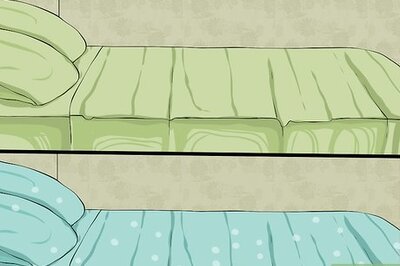

Comments
0 comment